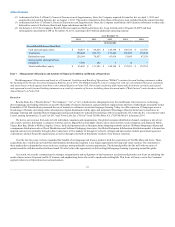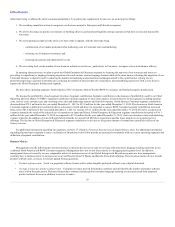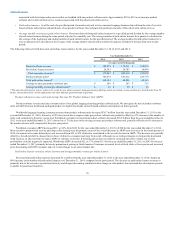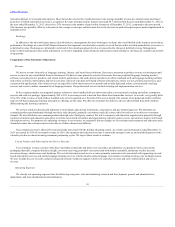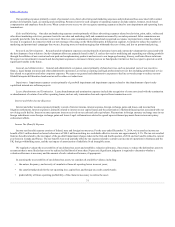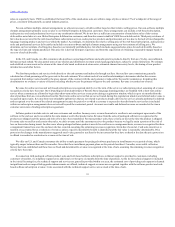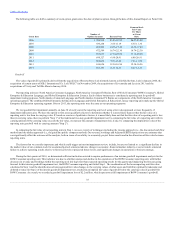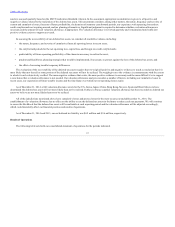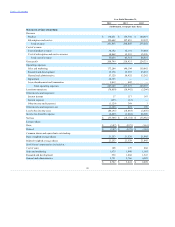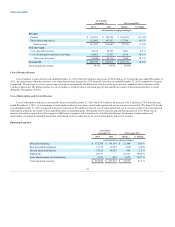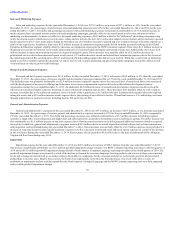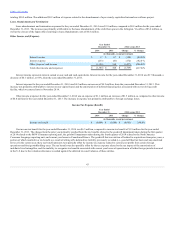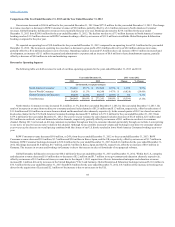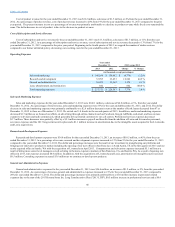Rosetta Stone 2014 Annual Report Download - page 39
Download and view the complete annual report
Please find page 39 of the 2014 Rosetta Stone annual report below. You can navigate through the pages in the report by either clicking on the pages listed below, or by using the keyword search tool below to find specific information within the annual report.
Table of Contents
assets is assessed quarterly based on the MLTN realization threshold criterion. In the assessment, appropriate consideration is given to all positive and
negative evidence related to the realization of the deferred tax assets. This assessment considers, among other matters, the nature, frequency and severity of
current and cumulative losses, forecasts of future profitability, the duration of statutory carryforward periods, our experience with operating loss and tax
credit carryforwards not expiring unused, and tax planning alternatives. Significant judgment is required to determine whether a valuation allowance is
necessary and the amount of such valuation allowance, if appropriate. The valuation allowance is reviewed quarterly and is maintained until sufficient
positive evidence exists to support a reversal.
In assessing the recoverability of our deferred tax assets, we consider all available evidence, including:
• the nature, frequency, and severity of cumulative financial reporting losses in recent years;
• the carryforward periods for the net operating loss, capital loss, and foreign tax credit carryforwards;
• predictability of future operating profitability of the character necessary to realize the asset;
• prudent and feasible tax planning strategies that would be implemented, if necessary, to protect against the loss of the deferred tax assets; and
• the effect of reversing taxable temporary differences.
The evaluation of the recoverability of the deferred tax assets requires that we weigh all positive and negative evidence to reach a conclusion that it is
more likely than not that all or some portion of the deferred tax assets will not be realized. The weight given to the evidence is commensurate with the extent
to which it can be objectively verified. The more negative evidence that exists, the more positive evidence is necessary and the more difficult it is to support
a conclusion that a valuation allowance is not needed. Our valuation allowance analysis considers a number of factors, including our cumulative losses in
recent years, our expectation of future taxable income and the time frame over which our net operating losses expire.
As of December 31, 2014, a full valuation allowance exists for the U.S., Korea, Japan, China, Hong Kong, Mexico, Spain and Brazil where we have
determined the deferred tax assets will not more likely than not be realized. Further, in France a partial valuation allowance has been recorded on deferred tax
assets we believe are not more likely than not to be realized.
All of the jurisdictions mentioned above have cumulative losses and pre-tax losses for the most recent year ended December 31, 2014. The
establishment of a valuation allowance has no effect on the ability to use the deferred tax assets in the future to reduce cash tax payments. We will continue
to assess the likelihood that the deferred tax assets will be realizable at each reporting period and the valuation allowance will be adjusted accordingly,
which could materially affect our financial position and results of operations.
As of December 31, 2014 and 2013, our net deferred tax liability was $4.2 million and $9.6 million, respectively.
The following table sets forth our consolidated statement of operations for the periods indicated.
37


